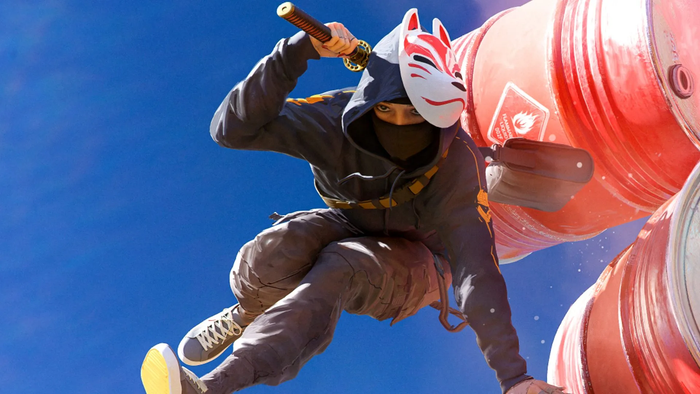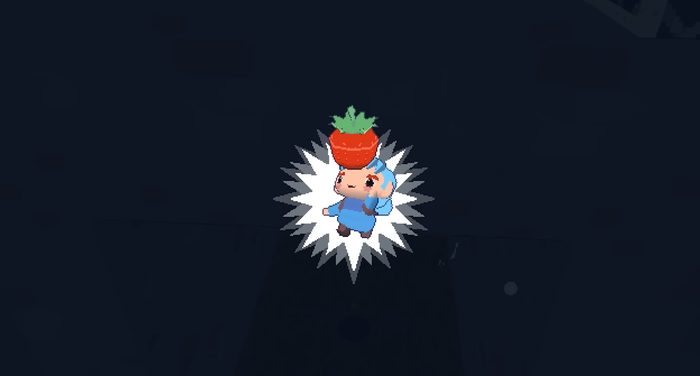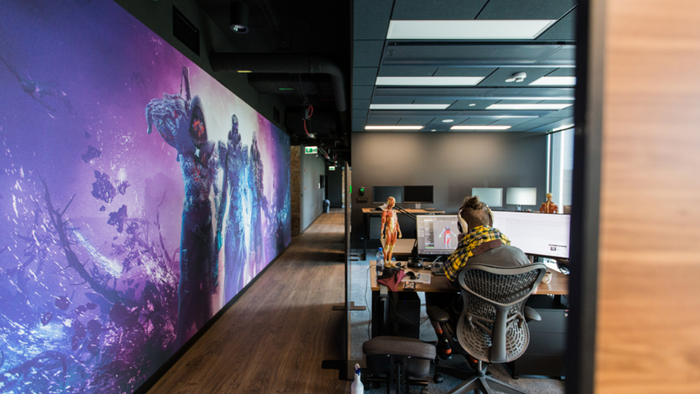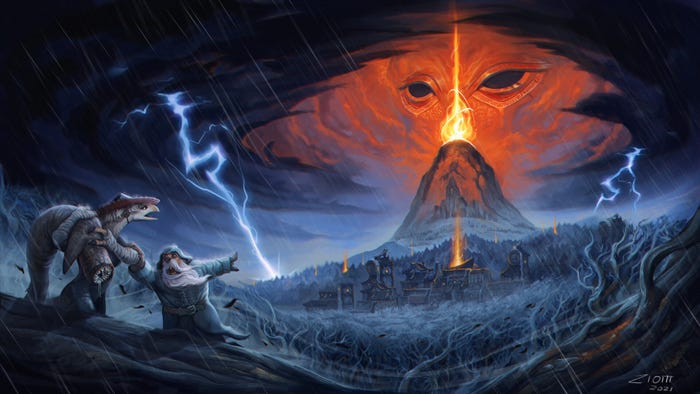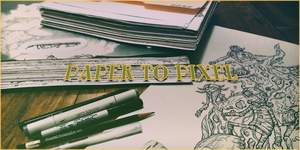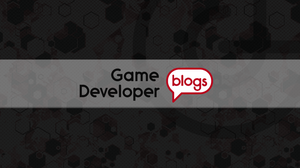Gamasutra sits down with Façade and Petz co-creator Andrew Stern as he launches the Portland, Oregon-based developer Stumptown Game Machine, and a deal with Rolando publisher ngmoco to debut Touch Pets Dogs for the iPhone.

Rolando publisher ngmoco and Stumptown Game Machine have announced the spring 2009 release of Touch Pets Dogs for the iPhone -- a networked virtual pets game, and the first product from the Portland, Oregon studio, founded by Andrew Stern. This game marks the reemergence of Stern into the world of virtual pets, a field he was at the foundation of, with the creation of the Petz PC CD-ROM franchise on PCs in the '90s while at PF Magic. The Petz franchise has successfully been resurrected (largely in name only) by Ubisoft following the success of Nintendo's title Nintendogs. But Stern is also known for the narrative experiment Façade, and is promising that this iPhone title be significantly more interesting than your average virtual pet game. In addition to the predictable touch interaction with an adorable cartoon puppy, the game features advanced AI simulation and social networking features that make it a more interesting proposition. Thus, Gamasutra used a detailed demo at ngmoco's San Francisco offices as a chance to talk with Stern, who is the director of Stumptown Game Machine and is designing the game and working as an AI behavior engineer on the project. Also present was Karlo Kilayko, the game's producer at Stumptown, and subjects discussed include the foundation of this new developer, the game itself, the state of virtual pets and AI simulation in games, player agency in AI-driven games, and more. New Games, New Company Can you catch me up on your personal history? Andrew Stern: I started working on the Façade R&D in January 2000. I've been working on that for four or five years. I did some other freelancing in between. It took a long time. I actually continued doing more on R&D until 2008 and continued past [the inception of Stumptown]. At the moment I'm fulltime on this stuff. Like I said, it borrows from it. You recently founded your company, Stumptown Game Machine. This is the first game that you're working on, right? AS: Right. The Façade technology out there -- there was another studio I worked at called Procedural Arts that sort of owns the Façade tech. And so Stumptown Games is like a sister studio to that. So you're maintaining both studios for separate projects? AS: At the moment, yeah. You're back to developing mainstream products. Façade was not a commercial product. AS: Right. It was a lot of R&D, but gearing towards smart products. And so, right, that's exactly what I'm interested in and what we want to do with Stumptown Game Machine -- discover new genres where AI is one of the primary components of enabling [gameplay]. What was your intent in founding Stumptown Game Machine? AS: iPhone games were the way we wanted to go. We started working with ngmoco. Yeah, that is our focus. How many people do you have working on the game? AS: In our studio we have three or four full-time, several are three-quarters time and several are contractors. The total number of people involved is 14 or 15. Just about every game developer in Portland. [laughter] So, everyone who is working on this game is actually working out of your studio, even if they are contractors? AS: Yeah. They are all in town. There are a couple of people who are not in town, like the lead animator who I used to work with on the original Petz is in LA. But, virtually everyone is from Portland. Yeah, we have an office there. Is that the model that you are pursuing for your studio, to keep it together? Or are you outsourcing? AS: I have always found, development-wise... I've mostly worked at start-ups. Definitely as much face-to-face time, with everyone working together very closely, works really well. Well, sound effects, for example, or music is something that you can more easily outsource. But, for the core game, we are trying to keep it as face-to-face as we can. I've found that we just get more. The iPhone games are on short schedules. We're trying to get to market, so the faster we can make it and the better communication, so face-to-face is good for that. I lean away from outsourcing important features. Karlo Kilayko: Yeah. Art and sound can be broken off a little bit, except for animation. I think the only reason it works with our animator remotely is because Andrew and Jeremy have worked together for a long time. AS: Yeah, we worked together for a long time. We know what to do. We have built similar things in the past, so we know what we're doing. The AI Question Now, obviously your background has been in AI, and behavioral simulation with the original Petz. AS: And also direct interaction. Very lifelike animation, too. It's a combination of AI and animation. And Façade sort of carries the same conversational simulation and behavioral simulation aspects too. AS: Exactly. So what's really compelling to you about simulating those things? AS: Yeah. I mean, applying AI to games is like the killer app for AI -- games are the killer app for AI. You know, everyone's fascinated in creating simulated living characters in games. It's just a super-compelling area to work in. It's the medium for the twenty-first century for the story, obviously. It's where the next generation of the story is going to go. What do you think about the state of AI in games right now? First of all, in terms of execution? What's being done right now, do you think? AS: I mean, today's games are really impressive. No doubt about that. Especially graphics environments and AIs are getting better. I mean, they're still mostly focused on tactical AI, strategy AI -- the actual emotional life of characters is still really shallow, unfortunately. There can be fancy cutscenes, but in terms of actual interactivity with characters and their emotional lives and conversation, the technology still has a long way to go. So the Façade project was a big experiment in R&D to try to push on that. Virtual pets are in the same universe, trying to push hard on creating models of emotion and personality, having them express themselves. So it's all sort of the same push, more and more lifelike characters. And of course that enables new genres of games. I mean, this is a new genre here, we've got. We're taking virtual pets but we're adding social networking to it, and mobile. So it's sort of a cross-genre thing, but the AI enables these new genres of games. So it's really exciting. So is the AI technology in your new game particularly advanced compared to what you've done in the past? AS: It borrows some of it. It has new things. The Dog Feed, this sort of ongoing story -- it's a bit of story generation. And there's a bit of AI -- how do you describe the events, you know? And how do the dogs decide, are they going to become friends or romances, there's a little bit of personality there. So, yeah, it borrows some from the Façade stuff, and it adds a few new things. 
Is there an AI model of the dog in terms of its attributes, and the AI model in terms of like, building relationships or things like that? How does that work? AS: Yeah. It has a model of what its base personality is, and we're probably going to expose some of the players to that, some not exposed yet. Like, is the dog, how social is it? How greedy, or generous, or tolerant, or energetic -- all these various personality traits. And then those determine what is going to make another dog attracted to it. So some dogs are really attracted to high-status -- dogs that have accumulated lots of toys, for example. That might attract a sort of materialistic dog. And some other dogs might be sort of introverted, and want another dog that's also introverted. Or maybe some dogs are more conservative; so, they meet another dog who's got, like, six romances going on. Maybe at first they get wooed by them, but once they meet some other girlfriend or boyfriend of that dog, now they're totally turned off. So there's a little model. It's not super-sophisticated; we have to keep it simple. How does player agency fit into that? Some of these things are values that can reflect the way the player perceives, or wants to aim, their dog. AS: Yeah. So when they first adopt the dog, we're going to expose some of the personality. So you're already making a decision, in the adoption center -- do I want a dog that's promiscuous? [laughter] Do I want a dog[-friendly] dog? There'll be some decision there. And then you can influence your dog's personality, to some degree, depending on how you take care of it. You know, the identity, try to shape more of it with these missions, can be an influence. And during the play date, you can buy gifts in the pet store to give to your dog, to give to other dogs. Or depending how I dress my dog up, make him dress up in an embarrassing outfit or not, you know, that might influence things. If my dogs start to scuffle, and I decide -- do I pull them apart, or keep fighting? So there's various factors, and the idea that the Dog Feed is explaining to you, what is the reasoning behind what just happened? So, yeah, the player has agency there. But the dog also has a mind of his own, too. So it's like a collaboration between you and the dog. Are you working with anyone who has a background in social networking or web development or is that sort of like stuff that you just taken as an influence? AS: Yes, and its influence. We're learning as we go. We're working closely with these guys here [at ngmoco] of course. And we've been working on some stuff for a while now. But yeah, definitely surveying what's out there and learning what works and what doesn't work. Adding Social Networking: The Sharable Player Story It's interesting, and the fact -- you talked about it in the demo -- the Dog Feed is a status report on the interactions your dog has had. And I'm assuming it's going to cover the missions you talked about, where the dog goes off and you send him on missions and, also, the relationships he has with your friends' dogs. AS: Yeah. And, maybe, any other things that you just happen to do. If I train my dog to now catch a Frisbee, then that will be announced, too. Also, dogs that need to be fed or that no one has been playing with, it will announce that they need that. It's a whole huge mix of stuff. The key to making this interesting for a lot of people is having dog relationships between themselves and other players. Especially in San Francisco, almost everyone I know has an iPhone, and probably a bunch of people are going to play this game. But you still have to make that leap to both agree to buy the game and then network together. What kind of challenges do you see in terms of getting that sort of social networking aspect up and running in a game context? AS: Word of mouth is obviously huge with these kinds of games. We are trying to make this so that the game is so cool that I would want to show you. Right? "How cool is this? You have to get this game so that we can have our dogs play together!" We are thinking of other mechanisms for ways to have players find other players. There will be a global feed, too, where you can view activity going on in general over the whole network. You could potentially find other players who you've never met that way. The social networking aspect of it is something that I think is probably going to be compelling for people. Obviously, that's why you put it in there. People like to compare, and I think people like to compete in different ways. That is probably going to drive it. AS: Yeah. Some of it will be competition -- like "my stats are higher than yours." Or I see cool stuff that you're doing with your dog, and I'm going to want to do that. But I think some of it -- I don't know if "cooperation" is the word, but the "play" is going to be fun, to make our dogs go through relationships. Oh, our dogs were in love, now they've broken up and now they're back together again. That's great. KK: It's like a soap opera. AS: Yeah. There's some competition and there is some just play. KK: It's a story. AS: Yeah, a story. A sort of a procedural narrative emerges from the dog's life. AS: Yeah. Is there any sort of arc to it? Is it a chronology of events, or is there an arc that you see emerging? AS: As your dog's social life gets richer over time, I think the dog will eventually need to reflect that. If two dogs had been together in the past, they'd broken up and they got back together, then you have now progressed to that point. They are reunited. And with those missions, there is definitely a progression that you make in terms of achievements in the missions. There are some arcs there. In a way, with soap operas, you can go on forever. Right? The way that soap operas do, things happening again... It is always interesting to see why: "Why are we friends or not, today?" There are also moods. We can still be friends, but our dogs could be annoyed at each other today for some reason. Then they would recover from that. Or our dogs are in a romance, and then my dog is attracted to some other dog but hasn't started a romance with that other dog. I think it will be, hopefully, endlessly entertaining to see that unfold. Tell me about the design of the missions. You alluded to the missions, but we weren't able to check it out. What I got was that you pick a mission and send your dog on it. You don't see that mission happening but you get the result. AS: You'll get a screen shot, though, of what happened. You'll see your dog rescuing a cat off of Mount Everest. Then, on the Dog Feed, if you click on that item, Dog Feed, anyone can see that image. The State of A.I. Today What do you think of this state of the virtual pet genre? I'm not asking you specifically talk about any project, but do you think it's evolved, or do think there's a lot of room to evolve? AS: Yeah, there's a lot [of room]... it needs to evolve more. Yeah, we need to see more new stuff with the genre. It seems to me that with the current capacity of any of the platforms that I have mentioned, iPhone, DS, anything, there is probably more things to be done, but the simulation aspect is very weak. I would think probably in terms of behavioral simulation, there's room for improvement. AS: Yeah. That's the hardest thing to do. That's no surprise that most virtual pet products are a little light on the AI and the simulation part. It's hard. It takes a lot of expertise and a lot of time. So... What's the benefit to concentrating on it? What's the concrete benefit to concentrating on that part? AS: It's coolness. It's cool, the actual product, the quality in the product. Just shipping it and get help to sell products. Do you think that's what the end user is going to perceive that? KK: Even when I play it, after so many months, I'll see the puppy do something that's emergent or a little different that I've not seen before and it's really cool. You start to form a better connection with it. AS: You just believe in it as a living thing. It's not fake. It's not simple, or obvious... it feels more alive. That's the goal at least. That's what we are striving for. What about communicating that to the player? AS: There's going to be more of everything you see here [indicates screen with dog on it] but there's going to be even more facial expression. Like if he's hungry he's not going to be running around happily -- if he is starved, really needing to be fed. He's going to whine and howl and yip. With characters, there's sort of the underpinning of AI but what's important is the way the AI expresses itself. KK: Yeah. If it's not expressive it doesn't matter. It doesn't matter how much affect is going on if it is not showing it, right? It goes back to -- how does the simulation engage the player? AS: Right. Have you talked to people, like other professionals who are working on AI? Have you found that there is a demand for people wanting to push forward? This is going to sound accusatory; I thought that AI would push forward more in this generation than maybe it had, in terms of behavior. AS: Yeah. I think a lot of us want it to. I think the reality is that large studios... I know a lot of the AI programmers and designers, and they all of course want to push and innovate. But it has a lot of constraints. They have to ship product. They can't take too much technical risk. So, it's really the smaller studios and indie studios that can afford to take technical risks and innovate. I think that is where a lot of the innovation will come from, like ngmoco. KK: My total personal opinion, but I think the expansion of online gaming has actually slowed down a little bit with the perceived value, from the business side. Because when you have other humans to play against... AS: Yeah. That is true. With the rise with online gaming, AI perhaps takes a little bit more of a backseat for a little while. I've heard people say that explicitly, at least in terms of, "Who can make a better opponent than another person?" AS: Well, but it's not about opponents. It's about cool characters that are creating, potentially, a story. So, it's about when you need strong characters. The problem is that you can make small, incremental innovations in AI, working in a large studio. But to really make a revolutionary leap, you have to take more risks, and you have to take more time. It's tough to do within larger companies. It's part of how larger companies work, I think. There's that, combined with the fact that it is a really hard problem, even if you have a lot of time. I spent five years, off and on, working on the Façade stuff. It was like three person-years for my collaborator and me. We made some progress, but it is a long way to go.
About the Author(s)
You May Also Like



